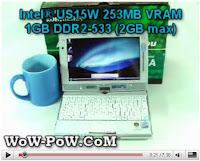 The main way for homes to harness solar power today is through bulky panels added to the rooftop or mounted on the ground.
The main way for homes to harness solar power today is through bulky panels added to the rooftop or mounted on the ground.But companies are now offering alternatives to these fixed installations, in the less conspicuous form of shingles, tiles and other building materials that have photovoltaic cells sealed within them.
“The new materials are part of the building itself, not an addition, and they are taking photovoltaics to the next level — an aesthetic one,” said Alfonso Velosa III, a research director at Gartner and co-author of a coming report on the market for the new field, called building-integrated photovoltaics.
Companies are creating solar tiles and shingles in colors and shapes that fit in, for example, with the terra cotta tile roofing popular in the Southwest, or with the gray shingles of coastal saltbox cottages.
More at the New York Time










